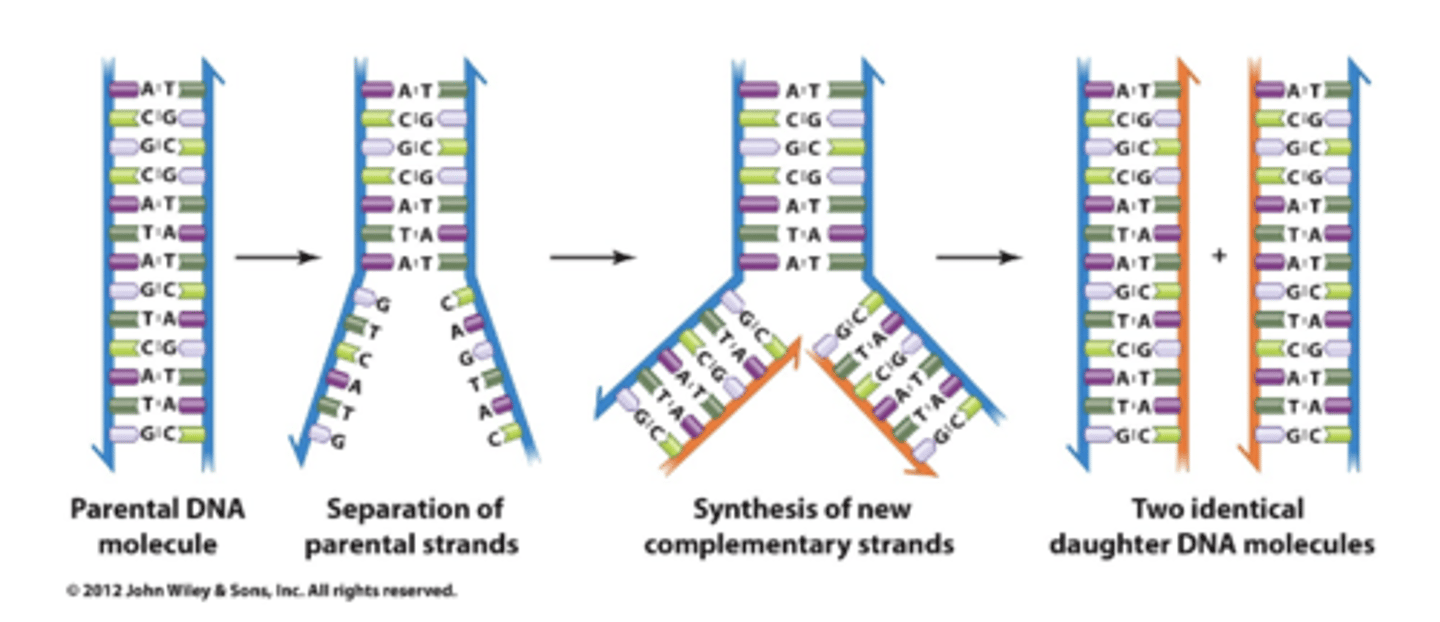Principles of Genetics- intro lecture
1/32
There's no tags or description
Looks like no tags are added yet.
Name | Mastery | Learn | Test | Matching | Spaced |
|---|
No study sessions yet.
33 Terms
Genetics (definition)
the study of heredity and the variation of inherited characteristics.
- the genetic makeup and phenomena of an organism, group or condition
Gregor Mendel
(3 great milestones in genetics)
Genes and the rules of inheritance
James Watson and Francis Crick
(3 great milestones in genetics)
The structure of the DNA
The Human Genome Project
(3 great milestones in genetics)
Sequencing DNA and cataloging of genes
(huge project involving hundreds of labs across the world)
lessons from each milestone (1)
-hereditary material had to be copied so it could be passed down from one generation to the next
lessons from each milestone (2)
- this material had to code information to guide the development and functioning, and behavior of cells
lessons from each milestone (3)
- once in a great while, it had to change to account for the differences in people
multiple examples as to why genetics is important in todays world
- contemporary medicine
- contemporary agriculture
Watson and Crick- The structure of the DNA (1953)
(the basic stuff we know about DNA)
- nucelotides are linked in a chain through sugar-phosphate interactions
- DNA molecules are made up of two chains of nucleotides would around each other in a helix
- base pairs hold the chain together
- A pairs with T
- G pairs with C
genome
the collection of DNA molecules (genes) that is characteristic of an organism
genomics
the analysis of DNA sequences that make up a genome
- involving DNA seqeuncing technology, robotics & computer science
Human Genome Project
- determined the sequence of nucleotides (3billion) in the DNA of the human genome
- human base pair sequence is 2.7B
- 20-25k genes, 80k proteins
The central dogma (established belief) of molecular biology
The flow of information is DNA-> RNA> Protein
mutation
changing genetic information
when a nucleotide is incorrectly incorporated in DNA (mutation)
it causes incorrect transcription, translation and protein/ enzyme function
genes
hereditary factors responsible for traits
alleles
different forms/variants of genes
Genetics and Evolution
- Variations in the DNA sequence make it possible for species to evolve over time
- Organisms with similar DNA sequences are descended from a common ancestor
Phylogentic Tree Analysis
A phylogenetic tree, or phylogeny represents the historical relationships among organisms
classical genetics (mendel)
looking at the gene
-encompasses transmission genetics (how it transmit, mutated and expression) and studies of the nature of the genetic material
molecular genetics (Watson & Crick)
studying the replication, expression and mutation of gene at molecular level. DNA sequences and manipulation of DNA molecules
population genetics (Darwin)
individuals within a population may carry different alleles of genes.
including evolution and inheritance of complex traits
examples of genetics in medicine
molecular genetics
- new ways to detect mutant alleles
- new ways to treat diseases (human gene therapy)
examples of genetics in society
- economically (pharmaceutical industry)
- legal impact (paternity testing, forensics)
genetic material must be able to do 3 things
1- DNA must be able to replicate itself
2- Must contain information to code for RNA/proteins
3- Must be able to change (mutate for possible evolution/adaptation)
DNA replication
-based on the complementary nature of the two strands
- when the two parental strands are seperated, the seperated strands can serve as a template for the synthesis of new strands
- newer strands are assembled by incorporating nucelotides according to base pairing rules
- at the end of replication, each template strand is paired with a newly synthesized partner strand
- dna replication is completed by enzymes

Gene Expression: Using genetic information
1- During transcription, an RNA molecule is synthesized from a DNA template
2- This messenger RNA (mRNA) molecule contains the information needed to synthesize a polypeptide
3- During translation, the triplet codons in the RNA specify the incorporation of particular amino acids into a polypeptide chain (protein)
proteome
the collection of all the different proteins in an organism
Humans have about 20-255k genes
Proteomics
The study of all the protein in cells
What is a gene
genes are made up of nucleic acids
which are building blocks called nucleotids
RNA stands for
Ribonucleic acid
DNA stands for
deoxyribonucleic cid
nucleotides have 3 components
sugar molecule (ribose, or deoxyribose), phosphate molecule, nitrogen-containing molecule (a,t,c,g,u)